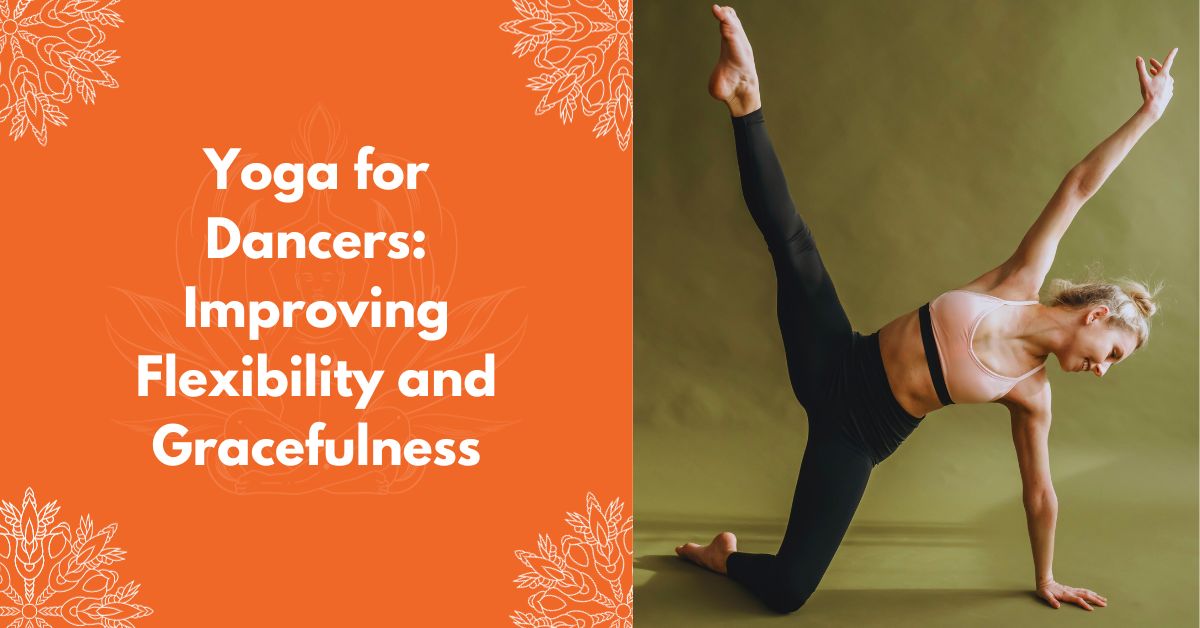
Yoga for Dancers: Improving Flexibility and Gracefulness
Discover the secrets of Yoga for Dancers: Improving Flexibility and Gracefulness. Unleash your inner dancer with our expert guide. Learn how Yoga can transform your dance skills and gracefulness.
Introduction
Welcome to the world of dance, where every movement tells a story. For dancers, mastering the art of flexibility and gracefulness is essential. In this comprehensive guide, we delve into the fusion of yoga and dance, exploring how Yoga for Dancers: Improving Flexibility and Gracefulness can elevate your dance performance to new heights. Embrace the synergy of these ancient practices, and witness the transformation of your dance journey.
Yoga for Dancers: Improving Flexibility and Gracefulness
Dancers are artists of the body, and flexibility is their canvas. Yoga for Dancers: Improving Flexibility and Gracefulness isn’t just a practice; it’s a lifestyle. By incorporating yoga into your dance routine, you embark on a journey of self-discovery, strength, and unparalleled grace.
Embracing Yoga Asanas for Enhanced Flexibility
Natarajasana (Dancer Pose):
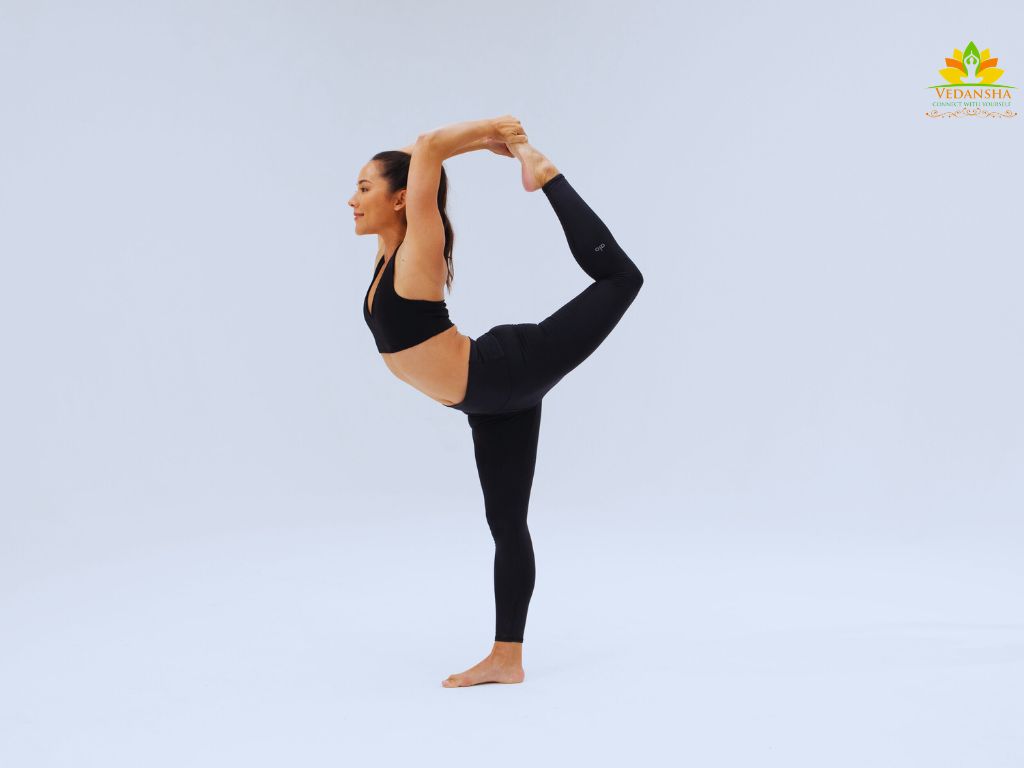
- Stand on one leg and grasp the opposite ankle behind you.
- Extend your other arm forward, parallel to the ground.
- Focus on balancing while feeling a deep stretch in your thighs and chest.
Vrksasana (Tree Pose):
- Stand on one leg and place the sole of the other foot against the inner thigh or calf.
- Alternatively, raise your arms upwards or bring your hands together at your chest.
- In order to stay balanced and activate your core, find a focal point.
Utthita Hasta Padangusthasana (Extended Hand-to-Big-Toe Pose):
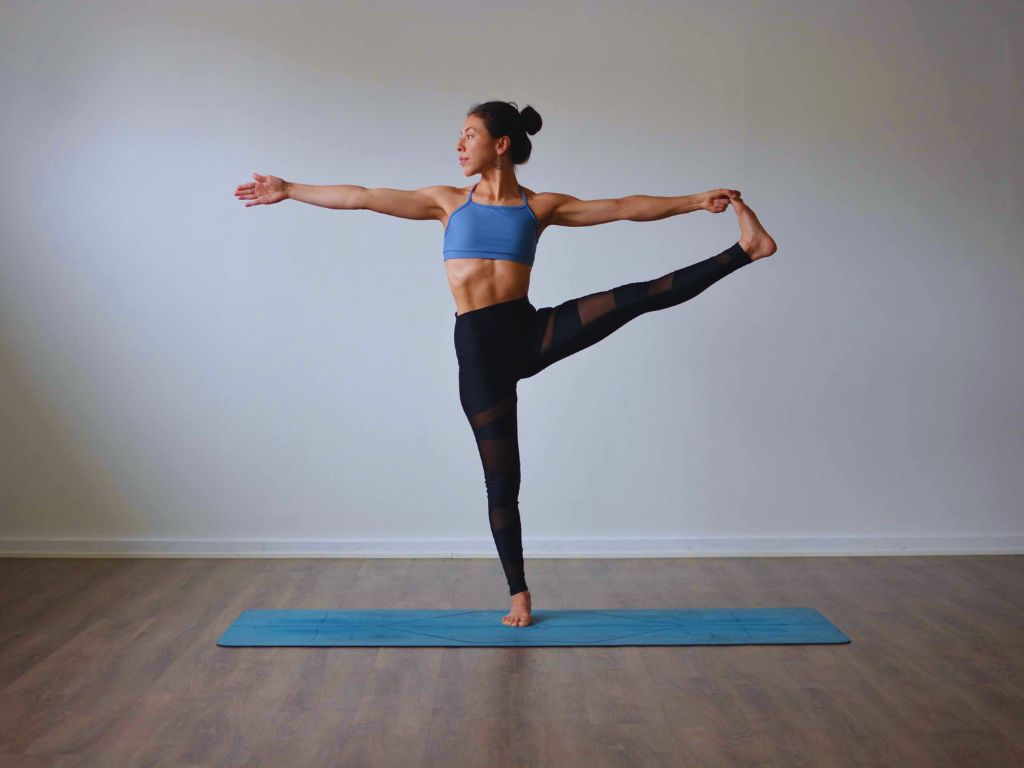
- Hold your big toe with your hand and extend the leg straight in front of you.
- Keep your other hand on your hip or extend it sideways.
- Focus on straightening your leg while maintaining a tall posture.
Padangusthasana (Big Toe Pose):
- Sit with your legs stretched straight in front.
- Reach forward and hold your big toes with your hands.
- Inhale, lengthen your spine, and exhale, bending forward from the hips.
- Keep your back straight and chest open while folding.
Upavistha Konasana (Wide-Angle Seated Forward Bend):
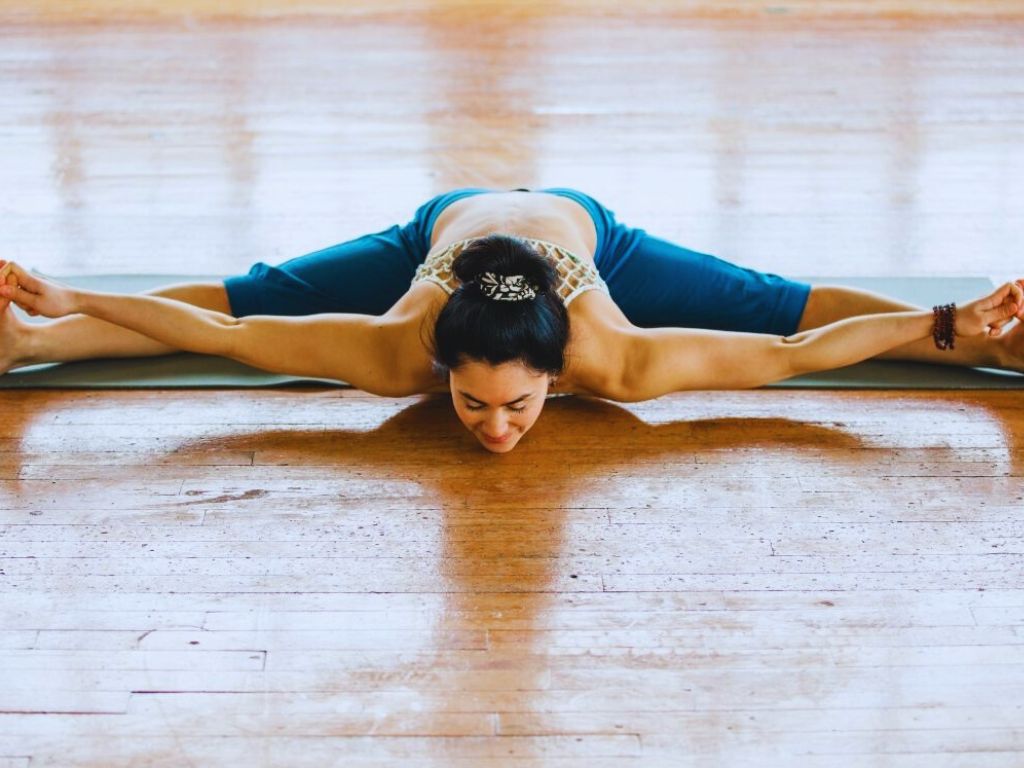
- Sit with your legs spread wide apart.
- Inhale, lengthen your spine, and exhale, bending forward from the hips.
- Hold your feet, shins, or the floor, keeping your back straight.
- Feel a deep stretch in your inner thighs and hamstrings.
Baddha Konasana (Bound Angle Pose):
- Put your feet together in a sitting position and support them with your hands.
- Inhale, lengthen your spine, and exhale, gently pressing your knees towards the floor.
- Keep your back straight and open your chest while folding forward.
Ustrasana (Camel Pose):
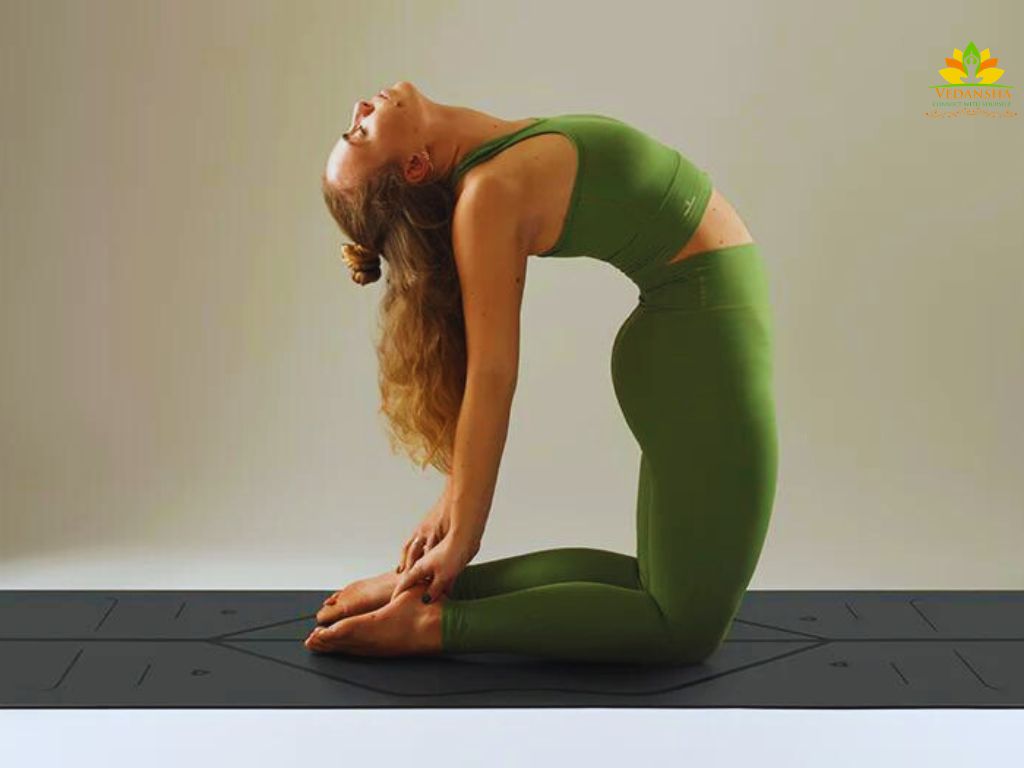
- Kneel with your knees hip-width apart.
- Reach your hands down to your heels while arching your back.
- Keep your chest lifted and hips pushed forward, feeling a stretch in your abdomen and thighs.
Anjaneyasana (Low Lunge Pose):
- Lunging forward while placing one foot forward.
- Lower your hips and bend your front knee at a 90-degree angle.
- Reach your arms overhead, keeping your chest lifted and shoulders relaxed.
Paschimottanasana (Seated Forward Bend):
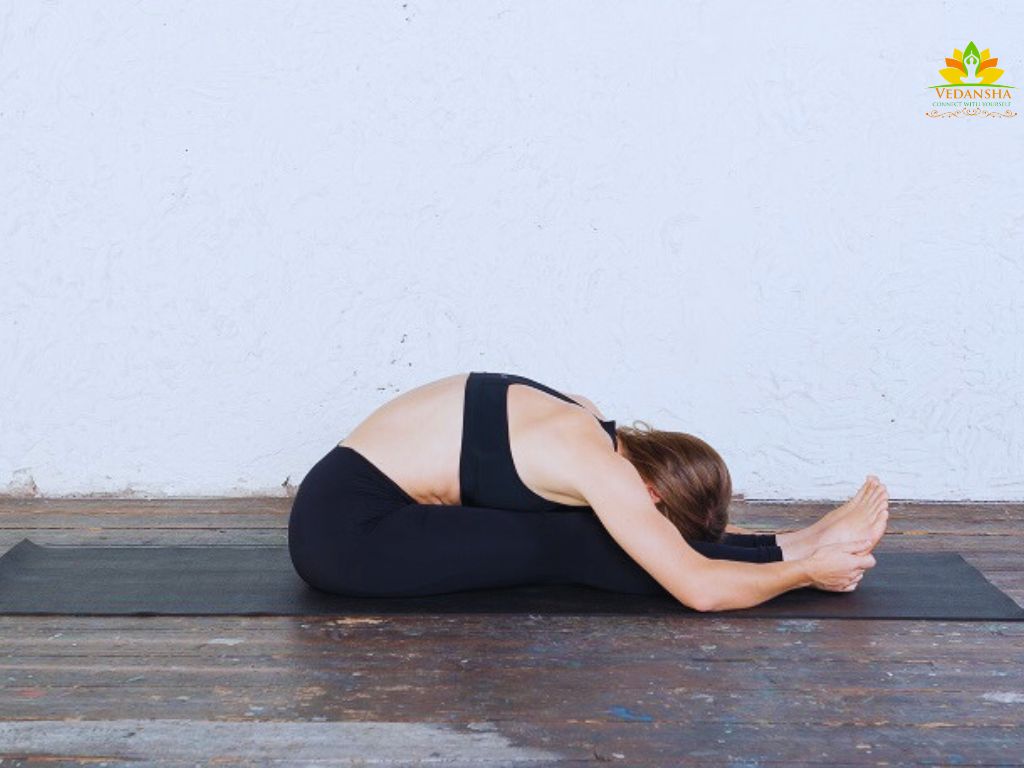
- Sit with your legs stretched straight in front.
- Inhale, raise your arms overhead.
- After exhaling, slant your hips forward and reach for your feet.
- Hold your feet, shins, or ankles, keeping your back straight and head relaxed.
Garudasana (Eagle Pose):
- Stand on one leg and cross the opposite leg over it.
- Bend your knees slightly and wrap your crossed leg around the standing one.
- Cross your arms at the elbows and then at the wrists, bringing your palms together.
- Focus on balancing and feeling a stretch in your shoulders and thighs.
The Harmony of Breath and Movement
Essential Synchronicity:
- The coordination of breath and movement is fundamental in Yoga for Dancers.
- Each movement is synchronized with the inhalation and exhalation, creating a seamless flow.
Mindful Breathing Techniques:
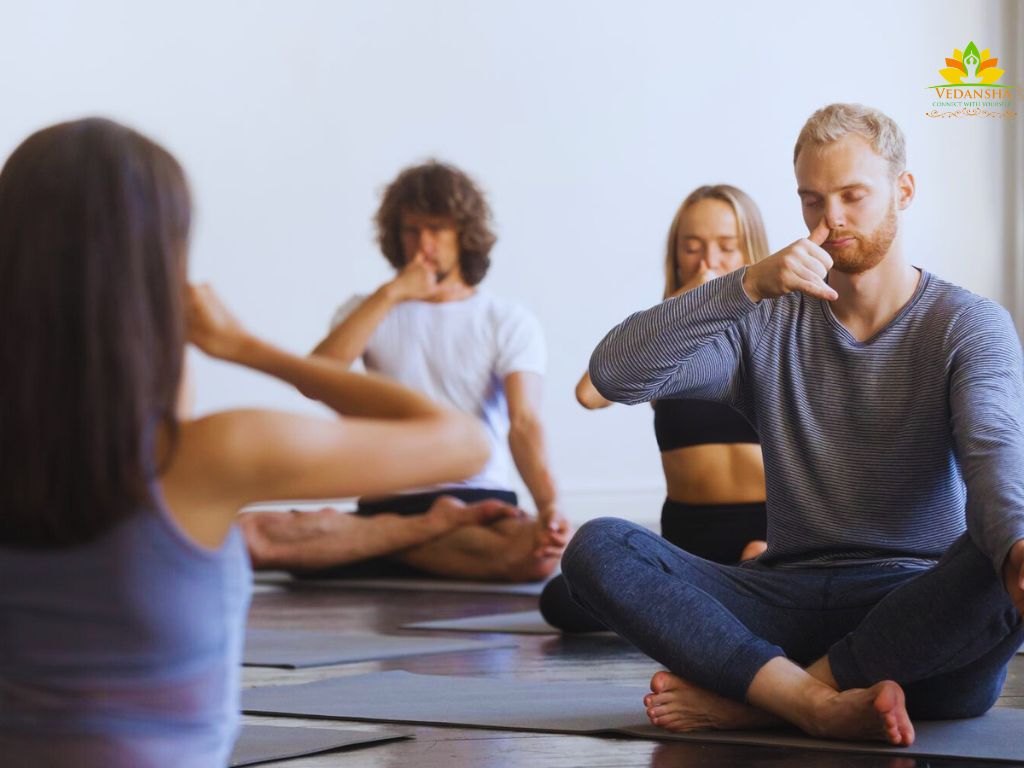
- Dancers practice “Pranayama,” a series of controlled breathing exercises.
- Pranayama techniques emphasize deep, rhythmic breathing, enhancing lung capacity and oxygenating the body.
Transitioning Gracefully:
- Through mindful breathing, dancers learn to transition smoothly between yoga poses.
- Inhalation often accompanies expanding movements, while exhalation complements contracting or folding poses.
Enhanced Focus and Presence:
- Conscious breathing deepens the dancer’s focus on the present moment.
- By being aware of their breath, dancers achieve a state of mindfulness, heightening their overall presence and artistry.
Improved Control and Balance:
- Controlled breathing enhances the dancer’s control over intricate movements.
- Balancing poses become more stable as dancers align their breath with their body’s center of gravity.
Fluidity in Movements:
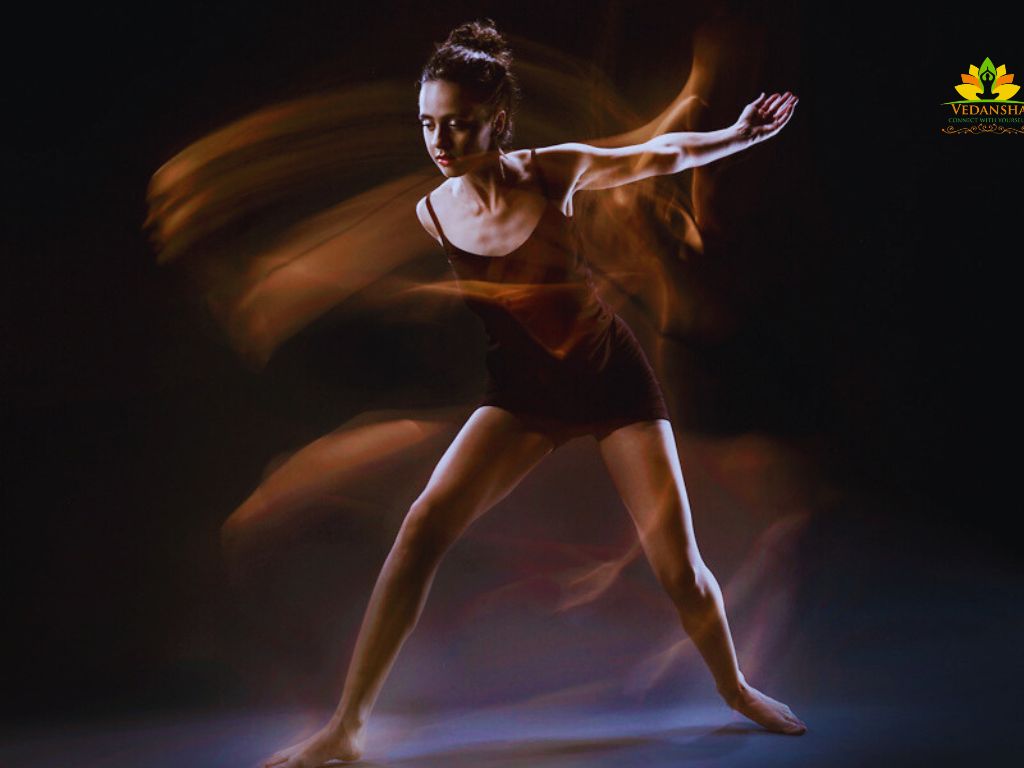
- The harmonious interplay of breath and movement brings a sense of fluidity to dance routines.
- Dancers appear more connected to their movements, creating a visually captivating experience for the audience.
Expressive Breathing Patterns:
- Dancers utilize different breathing patterns to convey emotions in their performances.
- Deep, calming breaths can portray serenity, while quick, sharp breaths may convey intensity and passion.
Elevated Endurance Levels:
- Proper breathing techniques optimize oxygen intake, sustaining dancers through longer routines.
- Endurance levels increase, allowing dancers to perform with energy and enthusiasm until the final moments of their performance.
Cultivation of Patience:
- Learning the harmony of breath and movement requires patience and consistent practice.
- Dancers develop patience as they refine their breathing techniques, leading to improved mastery of their art.
Audience Enchantment:
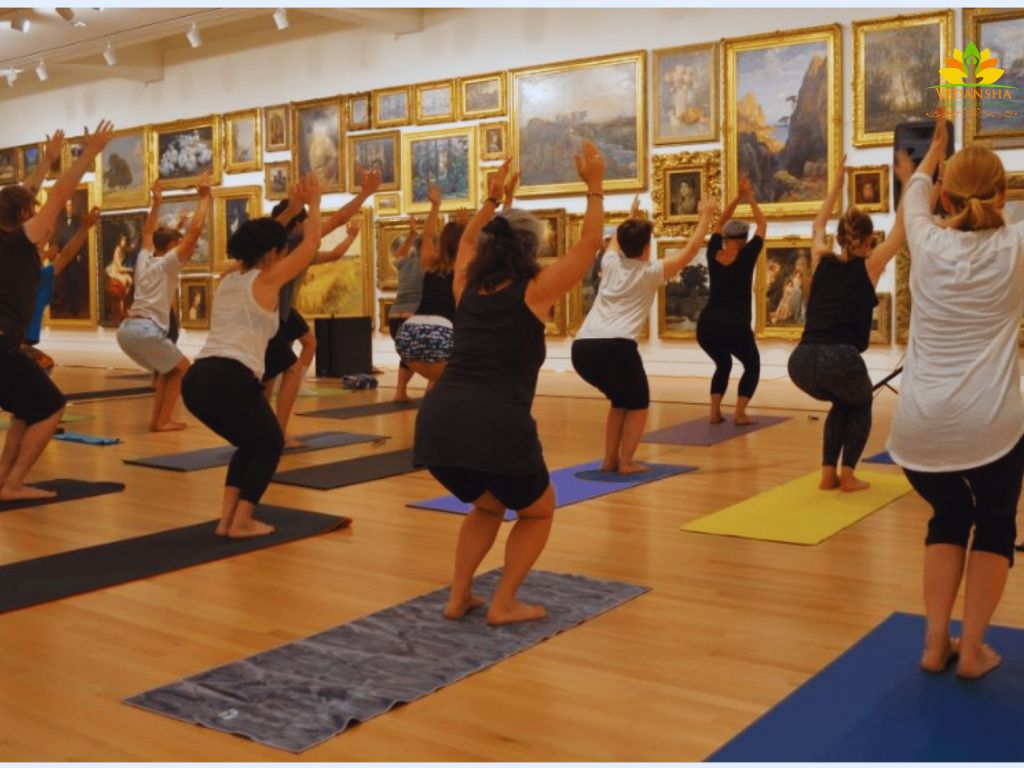
- The seamless fusion of breath and movement mesmerizes audiences.
- Dancers appear effortlessly graceful, drawing spectators into the mesmerizing rhythm of their performance.
Yoga Mudras: Elevating Gracefulness
Anjali Mudra (Salutation Seal):
- Join your palms together at the heart center.
- This mudra signifies respect and gratitude, grounding the dancer while expressing reverence.
Pataka Mudra (Flag Hand Gesture):
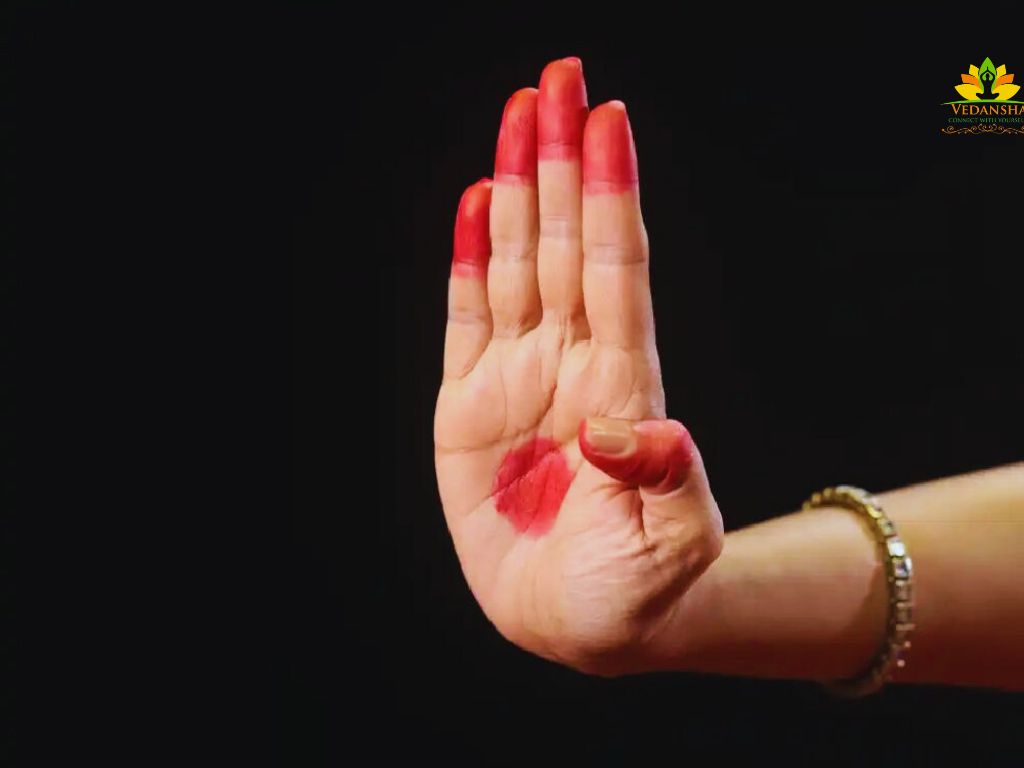
- Extend all fingers straight while keeping the palm flat.
- Often used to depict various elements or objects in dance, it adds elegance and precision to hand movements.
Tripataka Mudra (Three Parts Hand Gesture):
- Raise your index, middle, and ring fingers while keeping the thumb and little finger folded.
- Signifies the trinity of gods and is employed to express divine or powerful characters in dance performances.
Kartari Mudra (Scissors Hand Gesture):
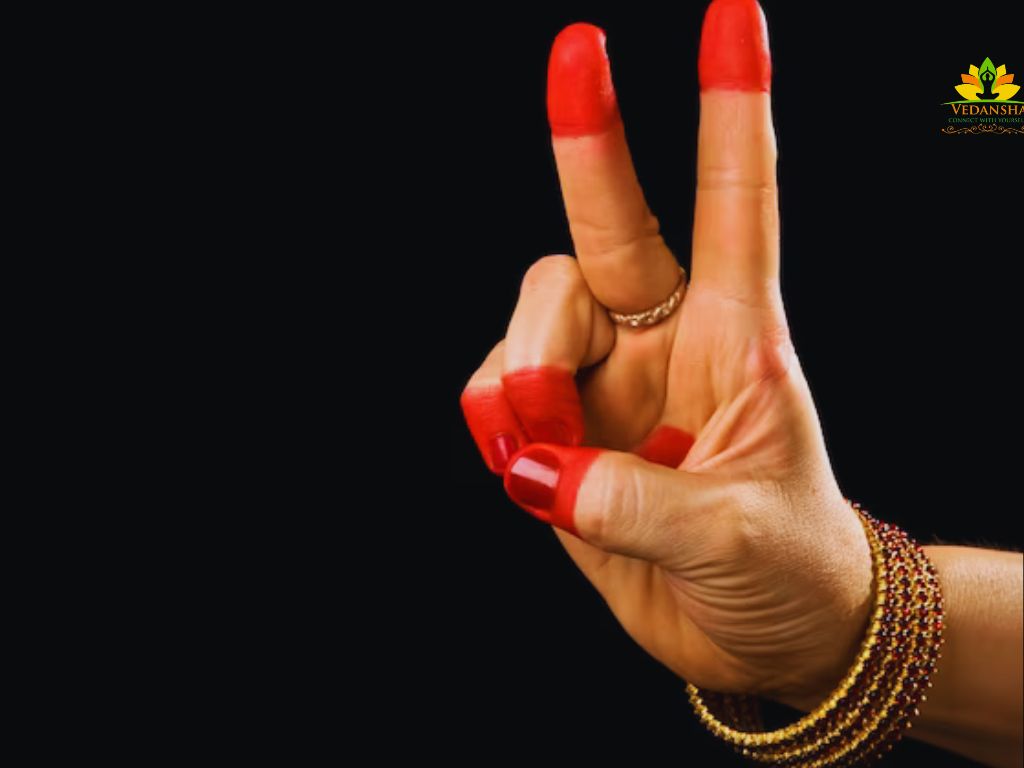
- Cross your fingers, with the thumb holding the other fingers in place.
- Represents sharp objects or actions, adding dynamic energy and intensity to the dancer’s expressions.
Ardhachandra Mudra (Half-Moon Hand Gesture):
- Form a half-moon shape with your thumb and little finger, keeping the other fingers folded.
- Signifies feminine energy and beauty, enhancing the gracefulness of the dancer’s movements.
Hamsasya Mudra (Swan Beak Hand Gesture):
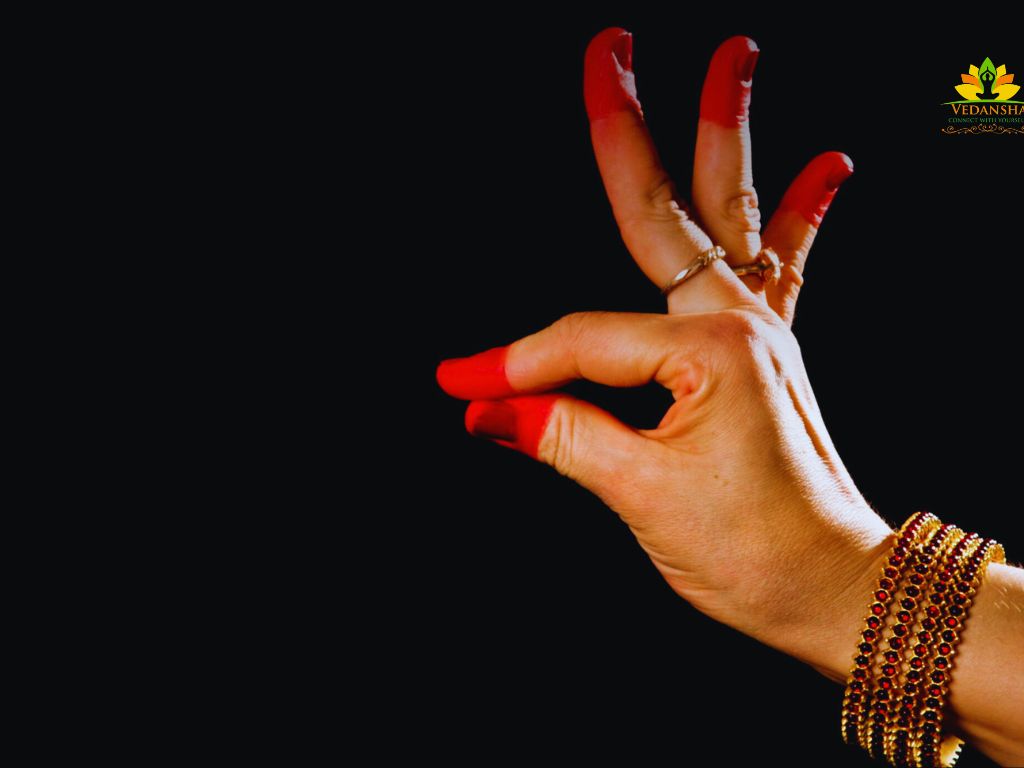
- Curl your fingers into a beak-like shape, mimicking a swan’s beak.
- Often used to portray birds or delicate characters, this mudra adds a touch of elegance and sophistication.
Simhamukha Mudra (Lion’s Face Hand Gesture):
- Open your hand wide and curl your fingers slightly, resembling a lion’s face.
- Represents strength and courage, allowing dancers to depict powerful and majestic characters with confidence.
Alapadma Mudra (Blossoming Lotus Hand Gesture):
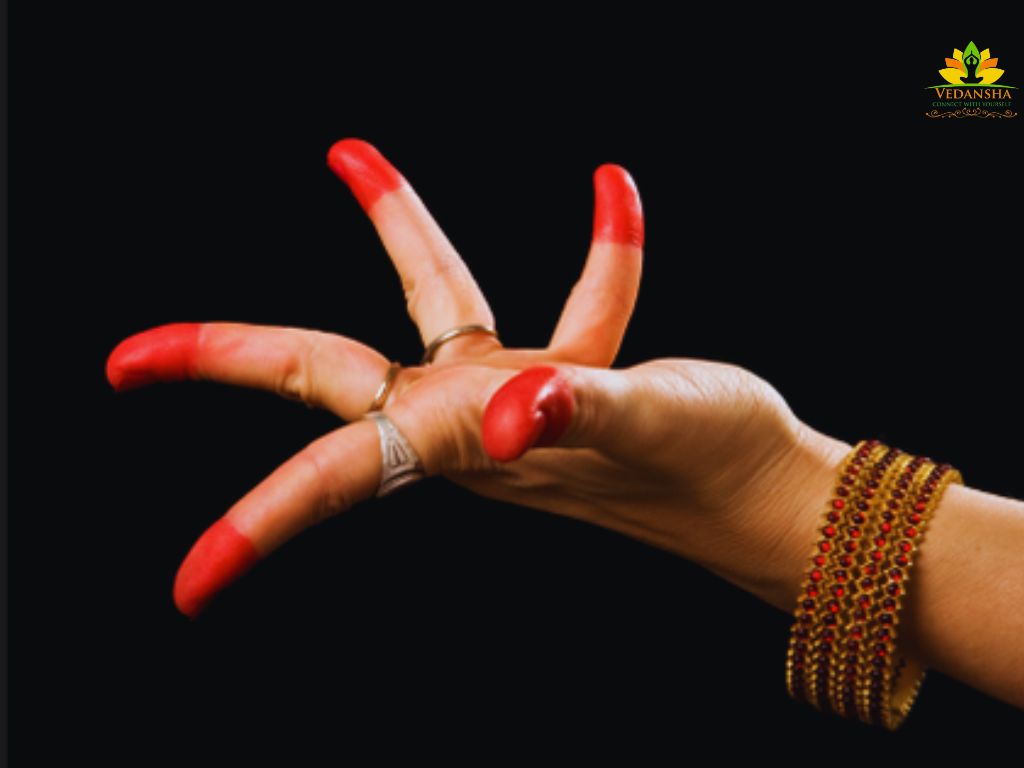
- Form a lotus shape with your fingers by touching the tips of your thumb, index, and little finger, keeping the other fingers extended.
- Symbolizes purity and enlightenment, enhancing the dancer’s aura of grace and serenity.
Katakamukha Mudra (Opening a Box Hand Gesture):
- Create a square shape with your fingers, keeping the thumb and little finger folded.
- Represents opening a box or revealing a secret, adding intrigue and subtlety to the dancer’s narrative.
Suchi Mudra (Needle Hand Gesture):
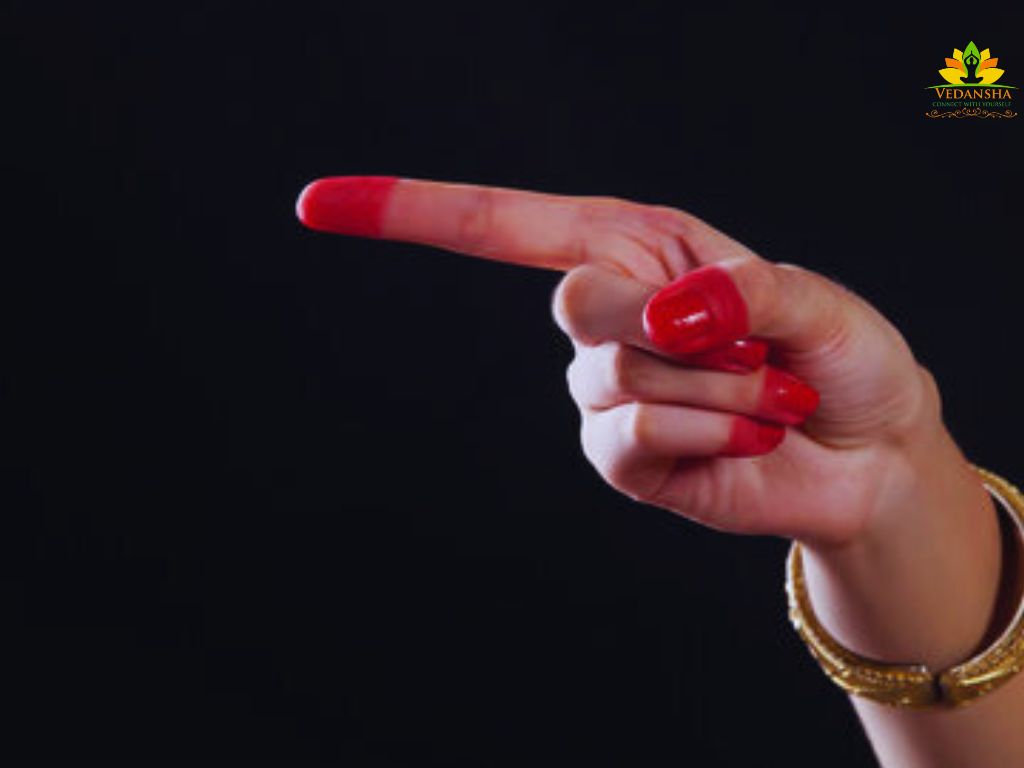
- Touch the tip of your index finger with the tip of your thumb, keeping the other fingers extended and straight.
- Signifies focus, precision, and concentration, allowing the dancer to portray detailed and intricate movements with finesse.
Conclusion
Yoga for Dancers: Improving Flexibility and Gracefulness is the gateway to exceptional dance artistry. Embrace this holistic approach, blend the wisdom of yoga with the expressiveness of dance, and witness the magic unfold. Your dance journey awaits – let flexibility and gracefulness pave the way to unparalleled performances.
Frequently Asked Questions
1. Is Yoga for Dancers suitable for beginners?
Yes, beginners can start with basic poses and progress, experiencing visible improvements.
2. How does Yoga prevent dance-related injuries?
Enhances muscle flexibility and joint mobility, reducing the risk of strains and injuries.
3. Which yoga poses enhance leg flexibility?
“Supta Padangusthasana” (Reclining Hand-to-Big-Toe Pose) and “Uttanasana” (Standing Forward Bend) elongate leg muscles.
4. Can Yoga improve mental focus during performances?
Yes, incorporating meditation enhances focus, allowing dancers to immerse fully in their acts.
5. When do improvements in flexibility become noticeable?
With regular practice, visible improvements can be observed within a few weeks.

